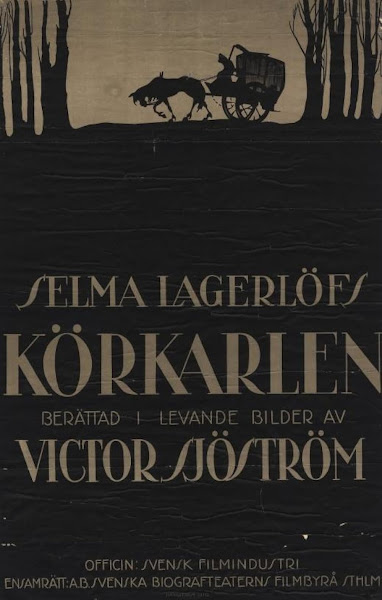The Phantom Carriage (Film Review)

1921 AB Svensk Filmindustri
Written and Directed by: Victor Sjöström (based on the nobel Körkarlen by Selma Lagerlöf)
Starring: Victor Sjöström, Hilda Borgström, and Tore Svennberg
MPAA Rating: NR; Running Time: 107 Minutes
The Nicsperiment Score: 10/10
Edit, a Salvation Army sister, makes one final request from her deathbed: she wants to speak to the town drunkard, David Holm. A year before, Edit repaired David's coat, and tried to help David repair his relationship with his wife and family. For all her efforts, Edit received only David's ungratefulness and his tuberculosis. Still, she holds out hope that David will get his life together, showing him an unconditional love that seems to do little to inspire him to change his ways. A messenger is sent to David, but when he is told of Edit's wish, he refuses. Just as the clock is about to strike midnight on that New Years Eve night, David engages in a drunken brawl with his compatriots and is killed...and yet, he's still there. Suddenly, a horse-drawn carriage approaches, mounted by a hooded figure holding a scythe. He tells David that the last person to die every year must drive death's carriage for the following year...and David's up next.
1921's The Phantom Carriage pulls double-duty as a ghost story and a moralistic family melodrama. It melds both together perfectly. Pulling triple duty as both star, writer, and director, Victor Sjöström works tirelessly to perfect double exposure techniques to present the spirit world interacting with the 1921 streets of urban Sweden. He uses haunting, gorgeous imagery to draw the viewer into his film's world so that the film's later moralizing feels natural. However, Sjöström's direction of his actors and his own naturalistic performance are The Phantom Carriage's secret weapon.
Silent films are often guilty of wild, theatrical overacting, with the stars wildly waving their arms, exaggerating their facial expressions. There's none of that here. Sjöström has his actors simply act as if they are really saying and doing what's happening instead of performing a vaudevillian recreation of the text displayed between the imagery. This gives the film a timeless quality that allows the viewer to quickly forget the film they're watching is even silent. Sjöström injects rivers of emotion into the It's A Wonderful Life-esque story, fully realizing themes of redemption and forgiveness. His imagery is just as timeless as the themes, and has inspired filmmakers for over a century. From Sjöström's impressionistic lighting, to a shot of a drunken, raving David chopping through a door with an ax to reach his terrified family that will have most viewers thinking that's where Kubrick got that from, Sjöström is operating at a visual level here most filmmakers can only dream of, even as he's pioneering much of the visual language itself. Even the great Ingmar Bergman wouldn't exist as we know him without Sjöström's work here. For any fan of cinematic history, ghost stories, or supernatural moral tales, The Phantom Carriage can't be missed.


Comments